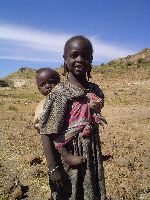Greater Employment Challenges Loom in the Pacific
Greater Employment Challenges Loom in the Pacific—ADB Report
MANILA, PHILIPPINES (3 July 2014) – Economies across the Pacific region will face rising challenges in generating needed jobs for their rapidly growing working-age populations in coming years, according to the Asian Development Bank’s (ADB) latest Pacific Economic Monitor launched today.
The Pacific’s working-age population is projected to increase from its current 6.6 million to 9.6 million by 2030. However, only about a third of new workforce entrants in the region can expect to find wage employment if recent years’ job creation trends do not improve.
“The relatively small size and remoteness of many Pacific economies makes job creation especially difficult in the region,” said Xianbin Yao, Director General of ADB’s Pacific Department. “Attracting investment and growing businesses in sectors that can create productive and sustainable job opportunities requires investments in infrastructure to enhance economies’ connectivity and reforms to improve their business environments.”
This issue of the Monitor features five policy briefs that explore the Pacific’s job creation challenges with contributions from researchers from the World Bank, the International Labour Organization, and the East-West Center’s Pacific Islands Development Program. The briefs highlight important characteristics of labor markets across the diverse economies of the region, and discuss policy options for creating improved employment opportunities in the region.
The Monitor also provides an update on regional economic trends, reporting a slightly weaker growth outlook for the Pacific region due to the impacts of flooding in the Solomon Islands and slower than expected credit and consumption growth in Timor-Leste.
Regional growth is now projected at 5.2% for 2014—down from ADB’s 5.4% forecast reported in the Asian Development Outlook last April. The report forecasts that Pacific growth will surge to 13.2% in 2015 as a result of the first full year of liquefied natural gas exports from Papua New Guinea (PNG). However, sluggish growth in the rest of the Pacific’s economies is expected to continue, with average growth in the Pacific economies other than PNG and Timor-Leste expected to run at 2.8% in 2015. Inflation in the region is forecast to remain stable at 4.5% through 2014 and 2015.
The Pacific Economic Monitor is a bi-annual review of economic developments in ADB’s 14 developing member countries in the Pacific region. Each issue includes policy briefs on a subject of current importance to the region. Contributions from outside authors and institutions are encouraged.
ADB, based in Manila, is dedicated to reducing poverty in Asia and the Pacific through inclusive economic growth, environmentally sustainable growth, and regional integration. Established in 1966, it is owned by 67 members—48 from the region. In 2013, ADB assistance totaled $21.0 billion, including cofinancing of $6.6 billion.


 UN News: Ceasefire The Only Way To End Killing And Injuring Of Children In Gaza
UN News: Ceasefire The Only Way To End Killing And Injuring Of Children In Gaza ICHRP: US-Japan-Philippines Trilateral Summit Makes The Philippines A Battlefield For US-China Conflict
ICHRP: US-Japan-Philippines Trilateral Summit Makes The Philippines A Battlefield For US-China Conflict East West Center: Environmental Journalist Alexander Kaufman Receives East-West Center’s Inaugural Melvin M.S. Goo Writing Fellowship
East West Center: Environmental Journalist Alexander Kaufman Receives East-West Center’s Inaugural Melvin M.S. Goo Writing Fellowship Compassion in World Farming: Octopus Farm Must Be Stopped, Say Campaigners
Compassion in World Farming: Octopus Farm Must Be Stopped, Say Campaigners UN News: Shipwreck Tragedy Off Djibouti Coast, Drone Attacks Continue At Ukraine Nuclear Plant, Madagascar Cyclone Update
UN News: Shipwreck Tragedy Off Djibouti Coast, Drone Attacks Continue At Ukraine Nuclear Plant, Madagascar Cyclone Update UN News: Aid Lifeline Reaches Sudan's Darfur Region In Bid To Avert ‘Hunger Catastrophe’
UN News: Aid Lifeline Reaches Sudan's Darfur Region In Bid To Avert ‘Hunger Catastrophe’